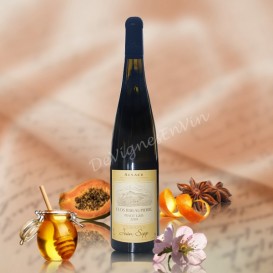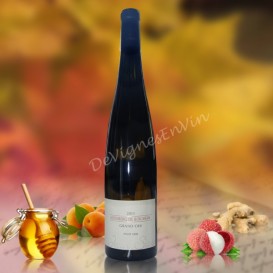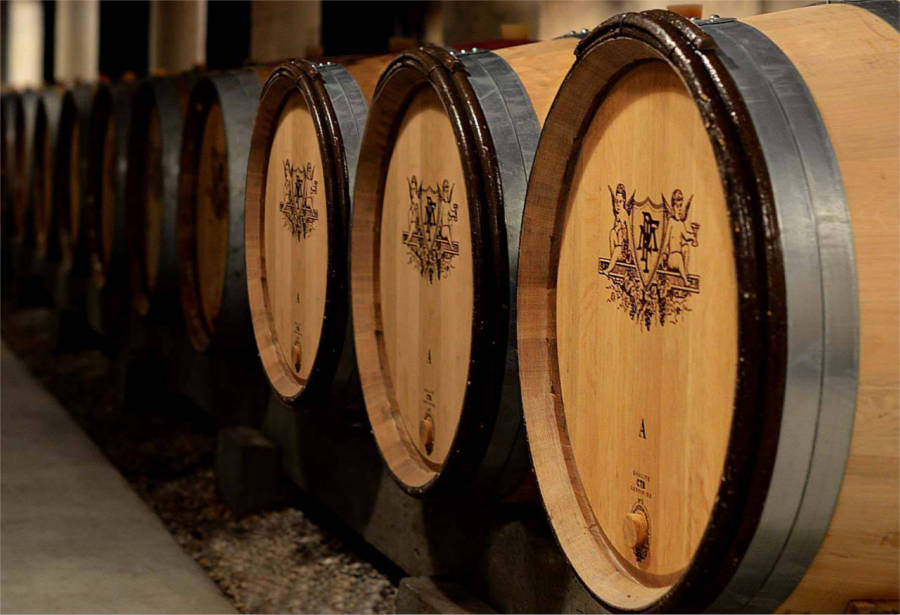Domaine Jean SIPP - Alsace

ALSACE 24 ha HVE 3 WINEMAKER: Jean-Guillaume SIPP
ESTATE HISTORY
Located in the heart of Ribeauvillé, the Jean SIPP estate works 24 hectares of vines spread over 50 plots scattered over 5 communes, including part of the terroirs classified as Grand Cru: Kirchberg de Ribeauvillé, Osterberg (Ribeauvillé) and Altenberg de Bergheim.
Among the plots classified as traditional Alsace designation, we find the unique CLOS RIBEAUPIERRE, a small vineyard of 1.5 ha, planted on the moutain side with slopes reaching up to 40%, and which is made famous by its history since these lands belonged, in the Middle Ages, to the lordly family of Ribeauvillé.
TERROIR
The varied landscapes of Alsace, where mountains, hills and plains rub shoulders, are due to the great diversity of the rocks making up the subsoil and which reliefs were shaped over 50 million years by the Rhine rift valley appearance.
Nearly a billion years ago, the succession of the marine and continental sedimentary deposits from the primary and secondary eras covered the old magmatic rocks base. At the end of the Jurassic period, the first signs of instability were seen in the form of an intense volcanic activity, with the emersion of the Rhine plateau, which will erode for 100 million years.
During the Tertiary era, distension and fractures led to the collapse of the Rhine block keystone with its sedimentary cover.
The Jean SIPP estate terroir lies on soil dating from the secondary era, more precisely from the Triassic (-245 to -199 My) and the Middle Jurassic (-175 to -161 My), mainly composed of marls, limestones and sandstones, which sedimentation took place in marine to brackish environments.
The Grand Cru Kirchberg de Ribeauvillé occupies a faulted compartment of the Triassic period where Voltzia sandstones, dolomitic sandstones & marls as well as sandstone marls follow one another from bottom to top. This type of stony, sandy and clayey soil is suitable for Riesling, Muscat and Gewürztraminer variety.
The Grand Cru Osterberg offers a subsoil compartmentalized by faults and which resembles the Grand Cru Kirchberg of Ribeauvillé's one, but with a dominant outcrop of sandstone and dolomitic marls.
As for the Grand Cru Altenberg de Bergheim, situated to the north of the Ribeauvillé fracture field, it rests on a subsoil composed of eight different terrains, ranging from Keuper clays (Upper Triassic) to Oligocene limestone conglomerates (-33 to -23 Ma), but the numerous faults juxtapose mainly Jurassic marls & limestones.
WINEGROWING & WINEMAKING
Since 2014, Jean-Guillaume SIPP has been managing the estate after having worked with the great names in the field: Zind-Humbrecht, Olivier Leflaive, Marcel Guigal, etc.
While waiting to obtain the organic farming label for the 2021 vintage, the estate has already been certified HVE 3 (High Environmental Value) since 2019, a certification that recognises farms committed to environmentally friendly approaches.
The grapes maturity is checked by tasting the berries before deciding on the harvest date. For the Grands Crus and wines bearing the 'Vieilles Vignes' and 'Vendanges Tardives' labels, two pickings are necessary and the harvest can last until mid-November.
White wines making
The grapes are picked by hand, by variety and by terroir. They are then pressed within two hours of the harvest by using a pneumatic press. The must is transferred to vats for a 24-hour static settling before being racked to vats or 50 hl tuns for the alcoholic and malolactic fermentations.
When the fermentations are over, the must is racked and filtered before bottling, except for the 'Grands Crus' and 'Vieilles Vignes' qualities which are aged in tuns for 8 to 11 months.
Red wines making
The Pinot Noir is entirely destemmed and then vatted for a 15 days to 3 weeks maceration period. The must is racked and then aged in French oak barrels for 12 months. At the end of the maturing process, the must is racked twice in succession to remove the lees and then bottled without filtration.
Renowned for the quality of its Grands Crus and their excellent Riesling wines, the Jean SIPP estate delights us with each vintage, when time for tasting has come. The winaes aromas are extremely complex, and the balance between the natural sweetness of the juice and its acidity is perfectly controlled. Great work.

-
CLOS RIBEAUPIERRE 2009 (Domaine Jean Sipp)
31,80 € In stock!ALSACE - AOP ALSACE - WHITE WINE
Grape variety: Pinot Gris (100%)
Lees ageing in tunes and oak barrels for 9 months
- Nose: velvety and ample. Aromas of apricot flowers, exotic fruits and aniseed.
- Palate: tender. Beautiful aromas of honey, candied orange and rice alcohol. Very good length.
Tasting date: January 2021
OUR OPINION: only pleasure...
-
PINOT GRIS GRAND CRU ALTENBERG 2011 (Domaine Jean Sipp)
30,00 € In stock!ALSACE - AOP ALSACE GRAND CRU - WHITE WINE
Grape variety: Pinot Gris (100%)
Organic wine Native yeasts
Ageing in tunes for 8 to 11 months- Nose: intense, fruity and floral. First discreetly smoky notes, aromas of grilled hazelnut, apricot, lychee, exotic fruits, ginger and honey.
- Palate: tender and taut with a nice acidity. Long and persistent finish.
Tasting date: January 2021
OUR OPINION: the aromatic persistence of this grand cru is impressive, this wine is superb because it has a beautiful tension.
- 1
- 2







